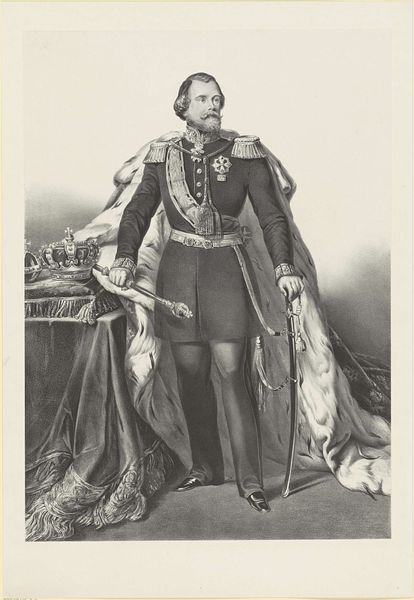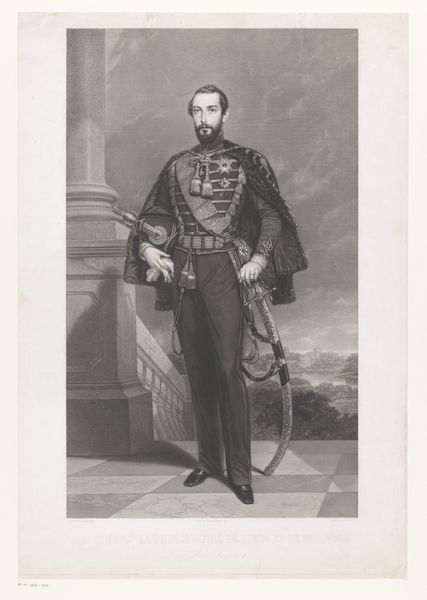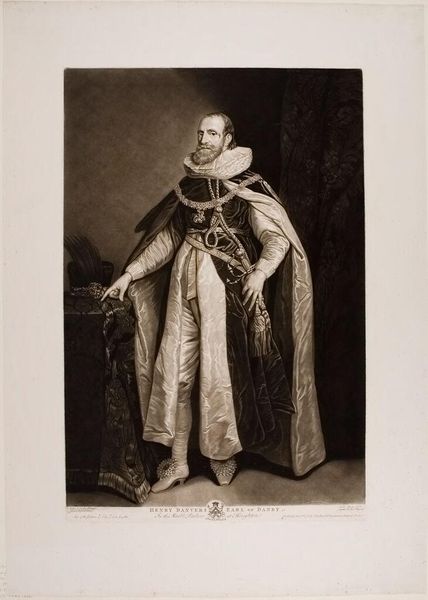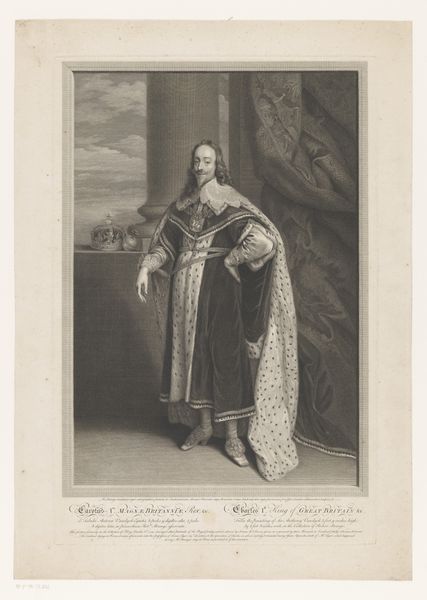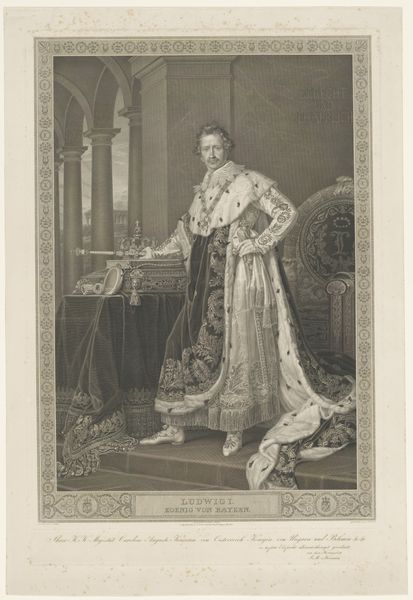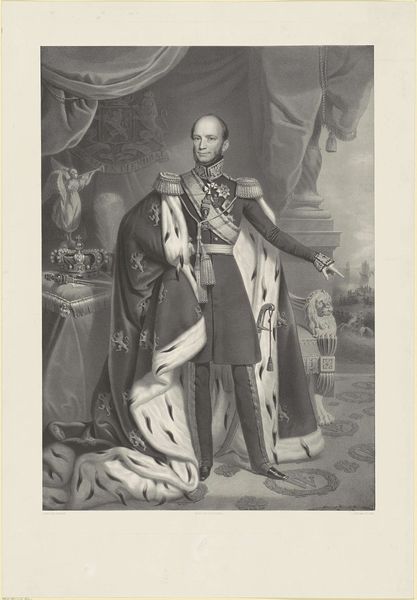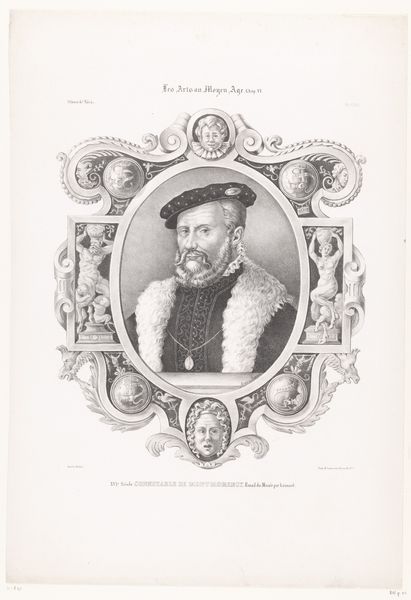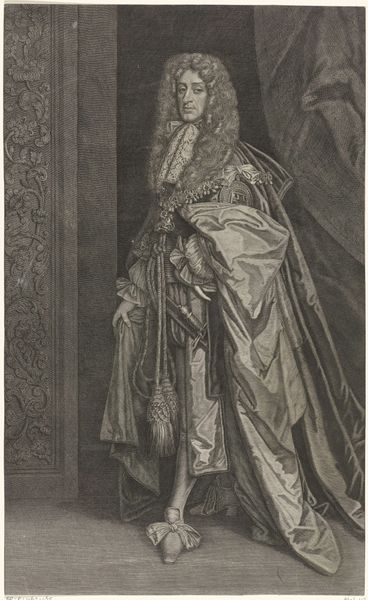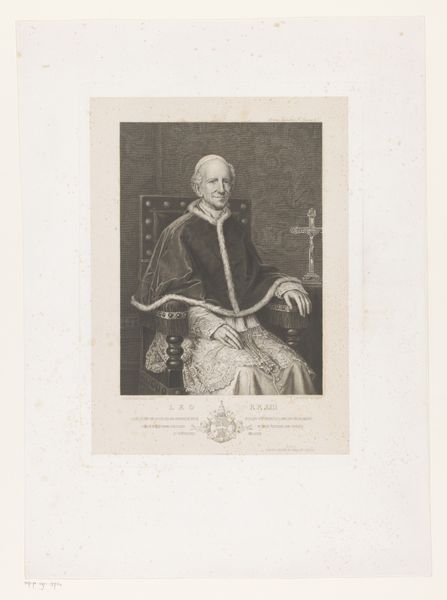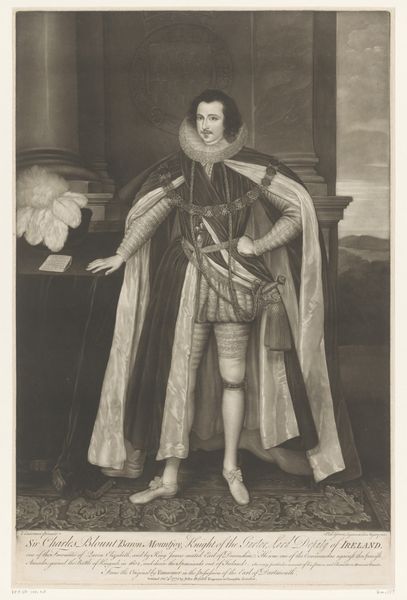
Dimensions: height 530 mm, width 353 mm
Copyright: Rijks Museum: Open Domain
Editor: Here we have Valentine Green’s “Portrait of Henry Danvers,” an engraving from 1775, currently held at the Rijksmuseum. I’m struck by the extravagance of the subject's attire. The whole piece feels very staged and deliberate. What story do you think this engraving is trying to tell? Curator: That "staged and deliberate" feeling is key to understanding portraits like these. Consider who would commission such a work and what purpose it served. This wasn’t just about likeness. It was about projecting power, lineage, and societal importance. What elements in the image contribute to this impression of authority? Editor: Well, definitely his clothing. The lace collar, the ornate robes, the shiny shoes...it screams wealth and status. And he is posed next to what looks like some heavy, draped furniture. Curator: Exactly! These details weren't just artistic choices; they reflected very real socio-political power structures. The sumptuous fabrics and the act of portraiture itself, became symbols of power accessible primarily to aristocracy, reaffirming their superior position. Green, as the artist, also navigates his own position through the agency of depicting a nobleman. Consider who had access to see an image like this; was it primarily other elites? Editor: Probably! It feels less about reaching the masses and more about circulating within a specific social sphere to reinforce established hierarchies. The work serves almost as a propaganda piece. Curator: Precisely. These images had very active social lives of their own within elite circles, confirming their subject's elevated standing. These prints served to solidify that individual’s image and role in society. Editor: This changes how I see it entirely. It’s no longer just a portrait; it's an active participant in the theater of power. Curator: Precisely. By exploring the original context, we uncover a rich narrative of power, access, and representation.
Comments
No comments
Be the first to comment and join the conversation on the ultimate creative platform.

